Introduction:
Assisted reproduction in parrots, a multifaceted approach that includes aviculture and broader conservation, is becoming increasingly important in alleviating issues faced by both captive and wild populations. Aviculturists use techniques such as artificial insemination along with controlled breeding programmes to ensure the genetic diversity and health of captive parrot populations.
Aside from aviculture, assisted reproduction is critical in combating challenges such as habitat degradation, illicit pet trade, and climate change in both wild and captive populations. It also plays a vital role in the conservation of the endangered species of the parakeets as many of the parrot species are under the threat of extinction, themost common example is of the Spix’s macaw (Cyanopsitta spixii) , which is only present in the captivity and said to be extinct in nature .The IUCN (International Union for the Conservation of Nature) presently lists approximately 13% of the world’s bird species as endangered or critically endangered.
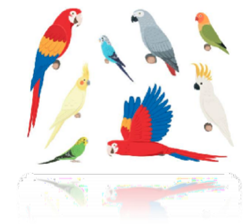
Evolving Aviculture Industry of Pakistan and the need of Innovative Reproductive Techniques:
The commercial parrot farming industry in Pakistan is growing in popularity, especially with the growing demand for exotic breeds, making it a profitable business venture. Advanced reproductive techniques such as Artificial Insemination (A.I) can significantly improve the success rates as infertility, disorders, or health problems all play a significant role and can result in an animal being disqualified from breeding. Monogamous parrots are particularly vulnerable, as unsuitable partners are difficult to replace. Due to a lack of suitable animals, forced pairings occur, which may result in no eggs or unfertilized clutches.
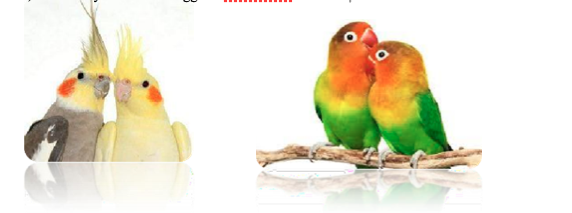
Assisted reproduction, particularly in the case of unfertilized clutches, may aid in the production of offspring. This method ensures precise breeding control, a high percentage of the fertile eggs resulting in healthier offspring and contributing to the conservation of these magnificent birds. Furthermore, as more people keep parrots as pets for their wonderful companionship, the industry’s appeal grows. The strategic use of these assisted reproduction techniques can ensure long-term sustainability of commercial parrot farming in Pakistan.
Artificial Insemination (A.I)
For the successful artificial insemination in the parrots, semen collection is the initial and the most important step. It can be also a bit tricky one as there are no well-established universal guidelines for the semen collection in all parrots; different techniques are used in different species. In the small parrots such as budgies etc. the significantly low volume of semen also adds to the difficulty in the process of effective semen collection.
Semen Collection:
Initially in early 1920s, the method used for the collection of semen from the avian species involved the killing of the hen, naturally inseminated, then the fresh semen was collected from the female reproductive tract of the killed bird but this was a very unsuitable and destructive
method, later on improvements occurred and in 1935 the most suitable method that is still used was developed by Burrows and Quinn called as the Abdominal massage method. They discovered that massaging the cock’s abdomen could elicit an ejaculatory response. Two years later, the same authors described an improved technique. They suggested that, in addition to massaging the abdomen, the husbandry man use his thumb and forefinger to apply pressure at the base of the copulatory organ and extract the semen.
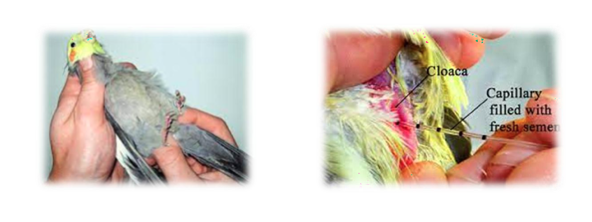
The massage technique is quite effective for a large number of birds including Parakeets and is widely used, but for the large Parrots Electro-stimulation is the most suitable rather that massage method. After the successful collection of the semen, it is evaluated for the quality. Volume, color, consistency and pH-value of the ejaculates as well as their level of contamination (for example with faeces, uric acid and/or blood) are evaluated. Additionally, the motility, vitality (via Intra Vital Staining), and morphology of the spermatozoa are evaluated, Nowadays Computer Assisted Semen Analysis (CASA) is used for the best possible results.
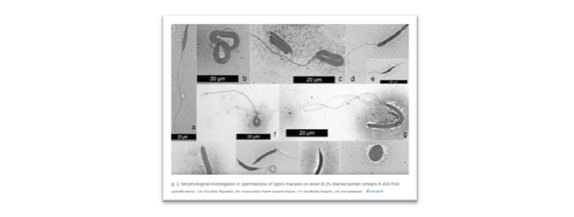
In the experimental studies it was confirmed that their exist significant differences in the spermatological aspects of the semen among different families of parrots for e.g. Eclectus parrots had a much higher sperm density and total number of spermatozoa than macaws, originating mostly due to their different breeding biology .
In the advanced countries, different kits are manufactured for AI in parrots containing semen extender, Capillary tubes etc., and are sold at very high prices, In Pakistan such kits can be manufactured also and due to the rising worldwide demand we can contribute to the more advancement and ease in this process through research.

Insemination:
The actual insemination can begin once a clean, high quality semen sample has been obtained. A two-person team is commonly used, with one member applying the proper pressure to the hen’s oviduct and the other depositing the semen into the oviduct.
Semen can be deposited at different places in the Female Reproductive tract such as:
- Intravaginal
- Intacloacal
- Intamagnal
Experimentally in the Cockatiel Parrots, it has been determined that intravaginal placement has the higher success rates. The minimum requirements of the volume and sperms in the semen are not known for the large parrots and only experimentally known for cockatiels.
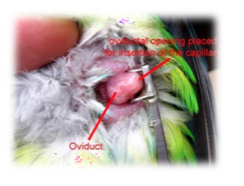
The time of insemination is also very important to make the whole process of the artificial insemination successful and it’s not very well defined experimentally. As semen is able to survive longer in the FRT, usually the hen is inseminated 4-5 days prior to laying its first egg of the clutch, followed for continuous inseminations after each egg laid.
Hypothetically speaking, the time of insemination could be defined and synchronized by parental administration of some hormones responsible for the egg laying process making the whole process of AI simpler and successful. It’s just a personal point of view!
Cryogenic storage:
The semen of the Parrots just like the other species can be stored in the cold storage for the longer periods of time, for the long term storage of the gene reserves, as there exists a large physiological difference between the different parrot species, a universal protocol for storage cannot be setup. However for the cockatiel parrots cryopreservative and semen diluent was developed as an example .
Conclusion:
In conclusion, artificial insemination is useful in addressing reproductive issues in parrot breeding. This method aids in the conservation of endangered species, the promotion of genetic diversity, and the well-being of captive populations. Artificial insemination is becoming a more reliable tool for breeders and conservationists, contributing to the long-term management of parrot populations.